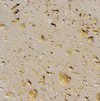Smooth Cut Stone Gallery
Sustainable
Sustainable Production of Natural Dimension Stone (ANSI/NSC 373) certification is now recognized by the U.S. Green Building Council’s LEED v4 building certification program as well as the International Living Future Initiative’s Living Building Challenge (LBC) version 3.1.
Now design teams have a clear path to ensure the natural stone they specify helps projects reach sustainability goals as outlined by LEED and LBC.
Limestone is a sedimentary rock composed largely of the mineral calcite (calcium carbonate: CaC03). The primary source of the calcite in limestone is most commonly marine organisms.
Limestone production is friendlier to your health than many manufactured products. According to OSHA regulations, elements containing Crystalline Silica have new respirable standards. The choice to use limestone over silica containing products like brick, concrete or ceramic decreases the environmental health issues associated with silica exposure.
National Stone Council – Resources page
Using natural stone is an active way to preserve, restore or improve the natural environment. Conserving resources, preventing pollution from concrete products and minimizing waste are some ways the stone industry is working to be eco-friendly through green building.
Smart
According to the Natural Stone Council, Natural stone stands up to weathering and time better than any other building material, natural or manmade. The Pyramid and the Parthenon demonstrate natural stone is the most sustainable building material available.
Durable
When choosing to install a stone floor, fireplace or wall cladding, etc. you are making a decision to use a product that will last for at least 100 years in many cases and certainly for the life of the building in most.
Recyclable
No other building material is as recyclable as natural stone. Nearly 100% of stone from deconstructed projects is recyclable and able to be used on other projects, or crushed for use as roadbeds, etc.
Zero VOC Emission
Research conducted by the University of Tennessee’s Center for Clean Products found that natural stone does not directly emit any VOCs (Volatile Organic Compounds). Stone may source VOCs from adhesives and applied sealants, however, low- and no-VOC options are available.
Water Recycling
We recycle water used in the fabrication of natural stone thereby dramatically lowering water consumption.
Heat Island Affect
Many light-colored varieties of natural stone have been shown to lower a building’s or site’s “heat island” through their ability to reflect heat. Heat island refers to the concept of a building raising the average temperature of the area surrounding a building and site.




